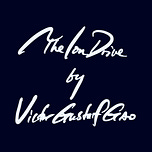Good evening.
My apologies for a few quiet weeks since the last update. A lot has been happening at work and in family life. Vaccination in the United States continues apace and work travel looks to resume, at least partially, as early as this month. As a result, for this spring and summer, I expect to publish once every three to four weeks.
The new cadence is in part to ensure the quality of each update measures up to your expectations. Popular among many writers today is the importance of publishing frequently. I am not one to argue a general case against that, but do believe that, if a trade-off is inevitable, quality must precede quantity, as fewer issues at a consistent quality would be a better mark of respect for the reader’s time than more issues of varying constitution. On the other hand, a more measured cadence is only fair to my family, who have been cheering me on with nary a scratch on the chin since I embarked on this project at the beginning of the year.
I look forward to filing dispatches from the road in the near future and introducing the voices of some of my friends to you in future issues.
Now onto the update.
1.
If you wanted to look into the eyes of someone who takes immense pride in their professional expertise yet is hurt deeply by accusations of the contrary, you only need turn to the Netflix documentary Made You Look: A True Story About Fake Art. In it, Ann Freedman is the hapless director of an old and respected gallery in New York that was involved in one of the largest forgery scandals in recent history. From 1994 to 2009, eighty million dollars changed hands, endorsed and brokered by Freedman, before the purported works of American maestros such as Mark Rothko and Jackson Pollock were unmasked as scams. Though several art industry insiders and observers in the documentary accuse Freedman of deliberate and criminal fraud, the FBI notably did not pursue prosecution, citing lack of evidence to prove guilt beyond reasonable doubt.
But perhaps the FBI also noticed a parallel between Freedman and another hapless expert, Abraham Bredius. Nicknamed “the pope” by his contemporaries, Bredius was the leading world expert on the works of the Dutch master Johannes Vemeer. A wealthy and venerable retiree in Monaco by 1937, Bredius disastrously misidentified a forgery as a newly discovered Vemeer when a well-meaning friend brought a painting to him in an effort to raise money for the anti-fascist Italian resistance. British economist Tim Harford gives a fascinating full account of the story in his book How to Make the World Add Up, but in brief, Bredius seemed to have harbored a personal pet theory that a period of Vemeer’s work was missing, and the forgery played into the unfounded theory perfectly. As Harford notes:
When Bredius saw the picture, he didn’t just see a painting. He saw proof that he had been right all along.
2.
It’s tempting to sneer at the blunders of Freedman and Bredius. They certainly seem to be the mistakes of a self-important and self-assured elite on niche subjects entirely irrelevant to the well-being of society at large. But that would be wrong.
In 2006, Professors Charles S. Taber and Milton Lodge of Stony Brook University published a study in the American Journal of Political Science entitled Motivated Skepticism in the Evaluation of Political Beliefs. In the study, the authors presented participants with both pro and con arguments on the topics of affirmative action and gun control. The authors then measured whether participants in the study were influenced by their prior beliefs. They were. Not only did the participants rate arguments that confirmed their prior beliefs more favorably, they also registered a level of animosity against conflicting arguments beyond what could be supported by logic. Deconfirmation bias and confirmation bias coexisted.
More dispiritingly, even when given total choice over which arguments to consume, most participants willfully shunned information that contradicted their prior attitudes and beliefs. That choice, by the way, is called freedom of information in an open society. As Taber and Lodge lay out the implications in their paper:
Our studies show that people are often unable to escape the pull of their prior attitudes and beliefs, which guide the processing of new information in predictable and sometimes insidious ways…Skepticism is valuable and attitudes should have inertia. But skepticism becomes bias when it becomes unreasonably resistant to change and especially when it leads one to avoid information as with the confirmation bias. And polarization seems to us difficult to square with a normatively acceptable model (especially since the supporters and opponents in the policy debate will diverge after processing exactly the same information). Moreover, up to some tipping point for persuasion, our model predicts polarization even from unbalanced and counterattitudinal streams of information.
In other words, if you find our societies so irreconcilable even when people are presented with the same information, it’s because it is our nature to hang on to our pre-existing views, to willfully ignore conflicting arguments, and to engage in motivated skepticism. As proposed by Israeli psychologist Ziva Kundra: all reasoning is motivated reasoning.
3.
In the world of economics and finance, a cornerstone theory is the Efficient Market Hypothesis (EMH). The idea is that at any given point in time, the price of an asset reflects all there is to know about the asset. Consequently, it’s impossible for an investor to consistently generate alpha, or, excess return above the market.
In an earlier era of modern finance, the prototypical protagonist, however tortured, was undoubtedly Gordon Gekko. A character in Oliver Stone’s 1987 film Wall Street, Gekko was sharp, ruthless, and amoral when it suited him. In popular imagination, Gekko epitomized the active investor with the uncanny ability to generate superior returns. Ironically, thirteen years before the film debuted, real-life economist and Nobel Prize laureate Paul Samuelson had published an essay, Challenge to Judgment, in which he argued that, over the long run, the active investor performed no better, if not worse, than the market. A year after Samuelson’s essay, entrepreneur John C. Bogle acted on the essay’s findings and created the world’s first index fund through his company the Vanguard Group. Though this first fund failed, Bogle kept the faith and his subsequent funds not only succeeded immensely but started a passive investment orthodoxy that persists even today.
Yet not all is well in passive investment land. A recently published paper in the Quarterly Journal of Finance looked at fund performance data and whether the fund’s manager was exposed to EMH in school. It turns out that managers who attended schools that taught EMH were more likely to manage index funds. When they did manage active funds, they held portfolios with larger numbers of stocks and deviated less from their investment benchmarks, meaning these active funds in fact looked more like index funds. And how did these EMH managers do? The paper deploys five models in its answer.
First, the net returns (first column in the table below) of exposed managers from the authors’ data set were higher, but the difference is statistically insignificant as shown by a p-value of 0.8510. Expense ratios (the last column) of exposed managers, however, are lower on a statistically significant level at a p-value of 0.0006. However, it is the middle two models that were the most damaging to EMH. In short, they show that on a risk-adjusted basis, managers exposed to EMH performed worse on a statistically significant level.

Note that the paper’s conclusions may not contradict Samuelson and Bogle as strongly as the above analysis might imply. As the authors of the paper note:
These [passive] managers do not generate superior performance, but the funds charge lower fees and generate higher fund flows.
And in Samuelson’s original essay, his verbatim argument was not that passive managers would do better, but that active managers don’t, at least not over the long run:
Perhaps there really are managers who can outperform the market consistently — logic would suggest that they exist. But they are remarkably well-hidden.
However, what is most interesting and hopeful for me in this whole debate on active vs. passive investing styles is a growing awareness from both sides on the unintended consequences of passive investing. Namely, because a passive investing style tracks the market instead of attempting to beat it, on a market-wide basis there is a lower level of informed scrutiny to try to separate well-managed companies from the rest. From the perspective of the companies in the market, passive investors also means management no longer enjoys the level of reward for a job done better. Over the long run, it is not hard to see wealth creation suffer for society as a whole.
Shortly before he passed on in 2019, Bogle himself called attention to the potential gravity of the matter:
If historical trends continue, a handful of giant institutional investors will one day hold voting control of virtually every large U.S. corporation. Public policy cannot ignore this growing dominance, and consider its impact on the financial markets, corporate governance, and regulation…It seems only a matter of time until index mutual funds cross the 50% mark. If that were to happen, the “Big Three” might own 30% or more of the U.S. stock market—effective control. I do not believe that such concentration would serve the national interest.
And so it would seem that while evidence exists in both academic research and the real world that motivated reasoning — or, said more harshly, wishful thinking — continues to trouble individuals and societies alike, in plumbing the depths of the riches in high finance and wealth creation, counterexamples of rational, open minds do not elude us either.
If you’ve enjoyed this update, consider forwarding to a friend and asking them to subscribe by pressing the button below. Thank you for your support.
From Aspen, Colorado
Victor













Share this post